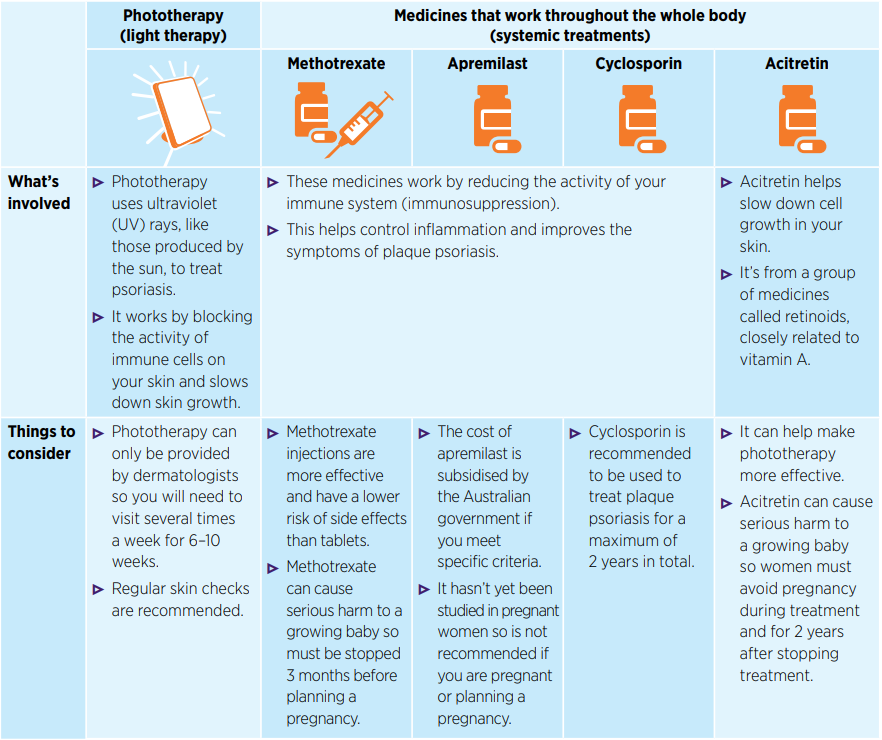Plaque psoriasis: When topical treatments aren't enough
Plaque psoriasis affects everyone differently, which is why there are different options you can use alongside topical treatments (creams, ointments, gels, lotions, shampoos and foams). The best treatment for you depends on a number of factors. Together with your health professional, the information in this guide can help you understand the next steps in managing your condition. Plaque psoriasis is an autoimmune condition that affects your skin. While it can’t be cured, it can be well controlled with the right treatment.
Learn about the options
Topical treatments are usually the first treatments doctors prescribe for plaque psoriasis. If topical treatments alone don’t control your plaque psoriasis, your doctor may also prescribe phototherapy or other medicines which target your body’s immune response rather than just the affected areas on your skin.
There are many different treatments available, and some will benefit you more than others, depending on your individual circumstances.

What matters to you?
Consider the following factors when discussing your future treatment
| I am: | Need to know | |
|---|---|---|
| Time-poor | Phototherapy is provided by your dermatologist at their clinic. You may need to travel there several times a week for at least 6–10 weeks. If you are using methotrexate, cyclosporin or acitretin you will need regular blood tests and more regular appointments with your dermatologist or GP to check for side effects from the medicine. | |
| At a higher risk of developing skin cancer | There is a possible risk of skin cancer from phototherapy and it may not be suitable if you have a history of skin cancer. | |
| There is a possible risk of skin cancer from phototherapy and it may not be suitable if you have a history of skin cancer | Methotrexate and apremilast also help control joint pain and swelling in psoriatic arthritis. | |
| OK with needles | Methotrexate can be given as an injection under your skin once a week. You, or a family member or friend, can learn how to do your methotrexate injections at home. | |
| Pregnant or would like to get pregnant? | If you are looking to start a family or are breastfeeding, then methotrexate, apremilast and acitretin will not suit your needs. These medicines are harmful for a growing baby. |
Do I have enough information and support to decide?
Here are some useful questions to ask your doctor:
- What kind of results can I expect?
- How long will it take for me to see results?
- How will I know if this treatment is not working?
- What kind of side effects should I watch out for?
- Will I need to make changes to my diet or lifestyle if I use this treatment?
- What other treatments can I consider in the future if this treatment does not meet my needs?
For more information
- Psoriasis Australia psoriasisaustralia.org.au
- The Australasian College of Dermatologists dermcoll.edu.au
- DermNet (NZ) dermnetnz.org
- NPS MedicineWise nps.org.au
- Low-dose methotrexate for plaque psoriasis action plan
- Topical treatments fact sheet
- Keep track of your medicines and important health information using the MedicineWise app. Visit NPS MedicineWise at nps.org.au/medicinewiseapp for more information, or download the app on your smartphone today.
Download the original pdf of this article
Back to Plaque psoriasis hub.
